Medical malpractice basics and help for victims
Medical malpractice is a broad category of harms referring to circumstances when a medical error or negligent medical care provider has caused harm to the victim. Patients should be able to trust in the medical care and treatment they receive but one study reports that medical malpractice is the third leading causing of the death in the United States.
Medical malpractice refers to when a doctor, medical care professional or medical care facility, such as a hospital, provides care that falls below the standard of care. Victims can be harmed when a foreign object is left in them following surgery, when they are given an incorrect medication or incorrect dosage or when a baby is harmed during the birthing process because the medical care professional delayed a c-section for too long.
Medical malpractice occurs when a doctor performs a wrong-site surgery; when an illness or disease is incorrectly diagnosed or a delayed diagnosis results in a worsened condition; or when medical tests are not ordered or read properly. Medical malpractice, unfortunately, can occur in a whole host of situations and can even result in death. As a consequence, it is important for victims and their families to be familiar with what a medical malpractice claim for damages is and how it can help.
Victims of medical malpractice and their families may be able to obtain compensation for their physical, financial and emotional damages through a claim for damages. Medical malpractice claims are oftentimes complex but because of their importance, it is essential for victims and their families to be familiar with medical malpractice protections, resources, remedies and rights when they have suffered harm.
What happens when victims have been incorrectly diagnosed?
As this blog recently discussed, medical malpractice protections are an important legal resource for victims of medical negligence and doctor error. But what happens if the patient was not diagnosed correctly? Medical malpractice protections also extend to circumstances when there has been an erroneous diagnosis and can help in those situations as well.
In circumstances of a failure to diagnose, erroneous diagnosis or delayed diagnosis, victims may also be able to pursue medical malpractice protections because the medical care provider may have violated their standard of care in failing to diagnose the patient's medical condition or failing to do so properly. If the medical care professional failed to consider a diagnosis that another medical care professional would have reasonably considered in the circumstances, or failed to order the correct tests of interpret them correctly, they may be liable for medical malpractice.
If the medical care professional simply fails to consider the victim's symptoms, or dismisses them, they may be considered medically negligent and liable for medical malpractice damages. When the failure to diagnose, erroneous diagnosis or delayed diagnosis results in a worsening condition for the victim, they may be able to pursue damages against the negligent medical care provider. Failure to treat or treating the wrong medical condition because of doctor error can result in additional harm to the victim.
Medical malpractice protections protect victims who have been incorrectly diagnosed or have otherwise suffered harm because of the negligence of a medical care provider. It is important for victims of medical malpractice and their families to be familiar with this complex area of the law to understand the variety of legal options that may be available to them when harmed.
Protections for victims of medical malpractice and their families
Medical malpractice can be a serious concern for patients and their families if the trust they have placed in their medical care is violated. Victims and their families who have suffered harm as a result of medical malpractice may have a claim for damages based on the liability of their medical care provider for the harm they have suffered.
When a medical care provider, including a medical professional, hospital or even pharmaceutical company in some circumstances, has negligently caused harm to the victim, victims and their families have important legal options to protect them. A medical error can result in serious harm, and may result in death, to the victim. Medical malpractice can occur in the diagnosis, treatment or care of an illness and result in devastating consequences for the victim.
To determine if the medical care provider or other medical professional was negligent in their care of the victim, the court will evaluate if the medical professional deviated from generally accepted standards of care; if a hospital engaged in inadequate care or poor training of its staff; and may look to regulatory authorities. In general, the question to ask is if a reasonably prudent medical care provider in similar circumstances would have acted in the same way.
A claim for medical malpractice can include a personal injury or wrongful death claim to help victims and their families seek damages. Damages may include physical, financial and emotional damages which may all be available through a medical malpractice claim for damages. Because medical malpractice claims can be complex, it is important for victims and their families to thoroughly understand their options when harmed.
What prompts the most medical malpractice claims?
Medicine is a complicated field. Every part or system of the body has its own specialists. Patients seeking care with what he or she thought was a common cold have been known to be redirected through a whole series of procedures and experts, only to come up dry on an accurate diagnosis. Sometimes those delays resulted in the patient becoming sicker or even dying.
That's perhaps the stereotypical narrative many in New York city embrace when they imagine filing a medical malpractice claim. The reality is that the basis of medical malpractice rests in the concept of a failure to deliver an expected standard of care. And under that rubric, a wide range of issues can serve as the foundation of a claim. The question then becomes how to find an attorney and assess the merits of the case.
What follows is a brief list that we believe most legal experts would agree form the bases of the most frequent medical malpractice claims.
- Breach of patient confidentiality: When you go to the doctor there are reams of documents and forms to fill out. What you might not know is that they are necessary because of the federal Health Insurance Portability and Accountability Act (HIPPA). Your health information is your business and providers are liable if they allow that information to become public and cause harm.
- Birth injuries: For all of the thousands of years of human procreation and advances in medicine and technology, medical negligence by doctors and nurses still often result in injury to mothers and newborns. In some instances, that negligence causes wrongful death.
- Hospital negligence: Doctors and nurses are the care delivers. They are supported by hospital staff backed by hospital policies. Inadequate policies and insufficient staffing or training can all lead to hospital errors that prompt medical malpractice claims.
- Failed treatment, misdiagnosis, and surgical error: These account for the greatest number of malpractice claims. They represent the most egregious examples of failing to deliver the standard of care expected by reasonable persons.
It is worth to note that not all mistakes rise to the level of malpractice. Knowing when an event does or does not is something that comes with skill and experience.
Medical malpractice and pain and suffering compensation
When you go under the knife, the last thing you want is for something to go wrong. Fortunately, the consequences doctors face for such a lapse are often severe, so the precautions they take verge on the extreme. Still, medical malpractice happens, and should you fall victim to it, the effects could be lasting and painful.
While the medical expenses that stem from an occurrence of malpractice can be easily quantifiable, the lifetime of pain and suffering are often not. In the state of New York, you could be eligible for what are aptly called "pain and suffering" damages as a form of reimbursement.
What exactly are pain and suffering damages?
Pain and suffering damages mainly account for two factors:
- Emotional distress, which can include anxiety, depression, insomnia or other mental symptoms.
- Lasting physical pain stemming from the incident.
These are sometimes called "non-economic" damages, and are meant to compensate you in the event that your life has been irreparably changed due to medical malpractice. New York is one of the few states that do not limit these types of damages. Hypothetically a jury could rule that any amount is reasonable.
How does a judge or jury calculate pain and suffering damages?
Because they aim to compensate for things that are difficult to put a price on, pain and suffering damages can be tricky to calculate. Typically, a judge or jury will weigh a few aspects of the case in order to arrive at a figure:
- How will the injury affect the afflicted in the long term?
- What will the effects be for the party at home?
- Is the party facing an altered work life?
These, among other questions, are likely to enter a judge's or jury's thought process prior to the awarding of damages. Because medical malpractice cases are inherently complicated - particularly when pain and suffering damages enter the fray - it can be beneficial to seek legal counsel. The aftermath of a medical malpractice accident is often a stressful, painful time, and the guidance of an experienced attorney may prove instrumental to ultimately obtaining the compensation you deserve.

